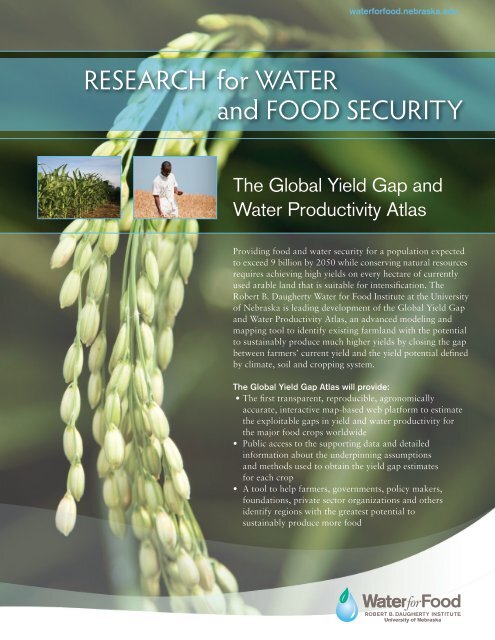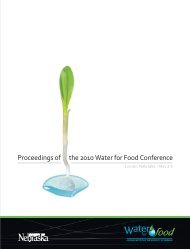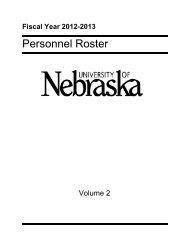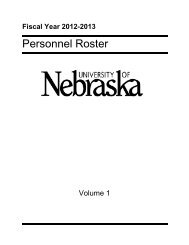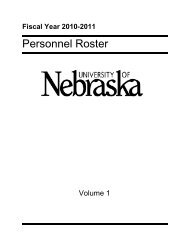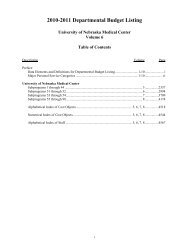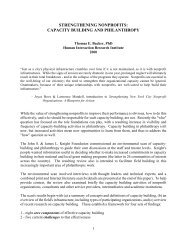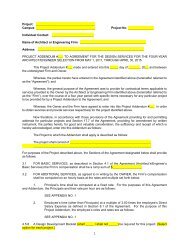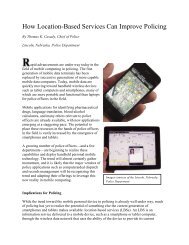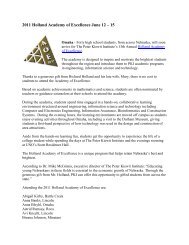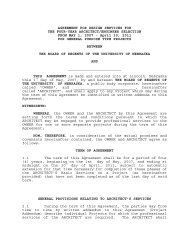The Global Yield Gap and Water Productivity Atlas - The Water for ...
The Global Yield Gap and Water Productivity Atlas - The Water for ...
The Global Yield Gap and Water Productivity Atlas - The Water for ...
You also want an ePaper? Increase the reach of your titles
YUMPU automatically turns print PDFs into web optimized ePapers that Google loves.
water<strong>for</strong>food.nebraska.edu<br />
RESEARCH <strong>for</strong> WATER<br />
<strong>and</strong> FOOD SECURITY<br />
<strong>The</strong> <strong>Global</strong> <strong>Yield</strong> <strong>Gap</strong> <strong>and</strong><br />
<strong>Water</strong> <strong>Productivity</strong> <strong>Atlas</strong><br />
Providing food <strong>and</strong> water security <strong>for</strong> a population expected<br />
to exceed 9 billion by 2050 while conserving natural resources<br />
requires achieving high yields on every hectare of currently<br />
used arable l<strong>and</strong> that is suitable <strong>for</strong> intensification. <strong>The</strong><br />
Robert B. Daugherty <strong>Water</strong> <strong>for</strong> Food Institute at the University<br />
of Nebraska is leading development of the <strong>Global</strong> <strong>Yield</strong> <strong>Gap</strong><br />
<strong>and</strong> <strong>Water</strong> <strong>Productivity</strong> <strong>Atlas</strong>, an advanced modeling <strong>and</strong><br />
mapping tool to identify existing farml<strong>and</strong> with the potential<br />
to sustainably produce much higher yields by closing the gap<br />
between farmers’ current yield <strong>and</strong> the yield potential defined<br />
by climate, soil <strong>and</strong> cropping system.<br />
<strong>The</strong> <strong>Global</strong> <strong>Yield</strong> <strong>Gap</strong> <strong>Atlas</strong> will provide:<br />
• <strong>The</strong> first transparent, reproducible, agronomically<br />
accurate, interactive map-based web plat<strong>for</strong>m to estimate<br />
the exploitable gaps in yield <strong>and</strong> water productivity <strong>for</strong><br />
the major food crops worldwide<br />
• Public access to the supporting data <strong>and</strong> detailed<br />
in<strong>for</strong>mation about the underpinning assumptions<br />
<strong>and</strong> methods used to obtain the yield gap estimates<br />
<strong>for</strong> each crop<br />
• A tool to help farmers, governments, policy makers,<br />
foundations, private sector organizations <strong>and</strong> others<br />
identify regions with the greatest potential to<br />
sustainably produce more food
For more in<strong>for</strong>mation contact:<br />
Robert B. Daugherty <strong>Water</strong> <strong>for</strong> Food Institute<br />
234 Whittier Research Center<br />
2200 Vine Street<br />
Lincoln, NE 68583-0857 U.S.A.<br />
tel: +1 402 472 5145<br />
Email: water<strong>for</strong>food@nebraska.edu<br />
<strong>The</strong> University of Nebraska is an<br />
Affirmative Action/Equal Opportunity institution.<br />
<strong>The</strong> <strong>Water</strong> <strong>for</strong> Food Institute, University of Nebraska-Lincoln<br />
<strong>and</strong> Wageningen University are leading an international<br />
collaboration to produce the <strong>Global</strong> <strong>Yield</strong> <strong>Gap</strong> <strong>and</strong> <strong>Water</strong><br />
<strong>Productivity</strong> <strong>Atlas</strong>. With funding from the Bill & Melinda<br />
Gates Foundation the <strong>Atlas</strong> initially will focus on selected<br />
crops in 12 countries in Sub-Saharan Africa <strong>and</strong> South Asia:<br />
Burkina Faso, Ghana, Mali, Niger, Nigeria, Ethiopia,<br />
Kenya, Tanzania, Ug<strong>and</strong>a, Zambia, India <strong>and</strong> Bangladesh.<br />
<strong>The</strong> Daugherty <strong>Water</strong> <strong>for</strong> Food Institute is funding <strong>Atlas</strong><br />
development <strong>for</strong> Brazil <strong>and</strong> Argentina. Both ef<strong>for</strong>ts involve<br />
close collaboration with leading agronomists in each country.<br />
<strong>Atlas</strong> Development<br />
<strong>The</strong> <strong>Atlas</strong> is a global project based on local data <strong>and</strong> requires<br />
creating networks of agronomists to obtain climate, soil,<br />
<strong>and</strong> cropping system data <strong>and</strong> use these data to simulate<br />
crop yield potential under irrigated <strong>and</strong> rainfed conditions.<br />
Initial work includes developing:<br />
• A st<strong>and</strong>ard protocol <strong>for</strong> quantifying yield potential, yield gap<br />
<strong>and</strong> water productivity<br />
• A network of local agronomists <strong>and</strong> experts to provide<br />
knowledge about crop management <strong>and</strong> productivity,<br />
<strong>and</strong> existing soil <strong>and</strong> climate<br />
• Methods to develop agronomically relevant long-term weather<br />
databases in major crop-producing regions lacking these data<br />
<strong>and</strong> new methods <strong>for</strong> up-scaling local yield gap estimates to<br />
regional <strong>and</strong> national levels<br />
• <strong>The</strong> mapview interface <strong>and</strong> interactive website<br />
Learn more at: yieldgap.org<br />
water<strong>for</strong>food.nebraska.edu


